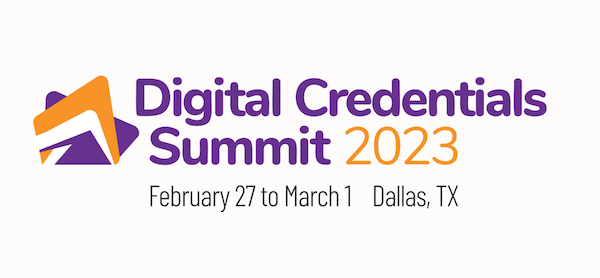Published on
Seeing Higher Education’s Potential in Serving Lifelong Learners

Most learners entering the higher education space don’t fit into the traditional 18- to 20-year-old mold. Often, they’re adults with industry experience looking to reskill or upskill to stay relevant in the market—and this isn’t just a trend. This is the new normal. As institutions look to serve this new learner, stackable credentials are increasingly important to include in the institutional framework. In this interview, Wendy Palmer discusses why there needs to be a strategic focus placed on microcredentials and how to put this play into action and present them consistently and meaningfully across the institution.
The EvoLLLution (Evo): Why is it so important for higher education institutions to focus on stackable credentials, especially today?
Wendy Palmer (WP): There are many different factors involved. Over the last five to ten years, there’s been a big debate about the traditional university degree’s value and relevance. Whilst the traditional degree isn’t disappearing—it’s still relevant for many—more and more people want to engage in high-quality education without having to commit to the financial and time commitment involved in completing a degree.
There are many players in the space of digital credentials and short-term courses. Higher ed has the opportunity to provide quality assurance in microcredentials through the trust inferred as an accredited institution. In our rapidly changing world, career learning and higher education can disconnect quickly. Higher education can bridge the gap by providing short stackable credentials.
Evo: What does it take to roll out innovative credentialing practices across the institution? And how do you create the connections to bring in industry partners?
WP: Different approaches can be taken. Many institutions set up separate entities for short-form courses and treat them as a different business function. At Deakin University, we chose to embed it into our framework, which has taken a large number of policy changes. Even something as simple as defining a student in Australia is a challenge. Here, it’s defined as someone enrolled in a degree program. So, if you’re not enrolled in a degree program, then who are you? For us, this embedding approach was driven by buy-in from the very top to be clear about what we wanted to achieve. A fail-fast mindset is also important. We now know many ways that don’t work to make microcredentials, but we learn each time.
Looking at connections with industry partners, one of the most successful approaches has been to leverage existing relationships. Traditionally, institutions have strong links with industry but usually for research or curriculum advisory boards. We started working with these boards and research partners to see what skills are needed, especially in emerging jobs, and how we can collaborate to develop and deliver the microcredentials together. Industry partners have been forthright in saying, “Here’s what we need that we aren’t getting from traditional degrees. How can we work with you to build the learning?”
Evo: How is the mindset around lifelong learners changing?
WP: One of the traditional mindsets is that if you went to a university and only studied part of a degree, you’re a dropout. But we want to change that to say you completed part of university-level education. You’ve earned credit, done something meaningful.
The language we’ve used historically across the sector has been negative. For example, there’s award students and non-award students. You’re either degree or non-degree. Everything is defined by its negative, and that’s one thing we’re looking at: How do you use positive language instead? Recognizing and celebrating unique lifelong learning journeys that aren’t linear and can be dynamic and personalized is how universities will succeed in meeting learners’ rapidly changing needs over their lifetimes.
Evo: What are some challenges that come with implementing stackable credentialing with industry partners?
WP: Terminology and standards play a big role. Terminology is a difficult one to overcome. Microcredentials have many different meanings and can be hard to explain. If we say someone completed a bachelor’s degree, everyone knows what that means. But if you say microcredential that could mean so many different things. In Australia, the government has released a framework that defines a microcredential as anything from an hour of learning to less than a degree and must have an assessment, which doesn’t narrow it down. What a microcredential means to us and might relate to what others call a short course with different lengths of learning and the volume of learning.
Another challenge is building a shared value proposition. There’s a lot of hype around microcredentials, but in our experience, they’re not the goose that lays the golden egg. If industry comes along and says it’s a wonderful revenue opportunity, it’s not, but might be in the future. In Australia, the market is still immature and cluttered. There’s a lot of interest, but there isn’t a strong uptake or clarity on how to easily work with universities on microcredentials just yet.
Evo: What are some best practices to classify stackable credentials more consistently, not only across the institution but also among employers?
WP: We’re building on work we started with Emeritus Professor Beverley Oliver, education change and thought leader and former Deputy Vice-Chancellor (Vice-President) Education at Deakin University. One focus is critical information and metadata that is part of the microcredential. It’s not about the name of the microcredential but how it’s described around things like volume of learning, type of assessment, identity management, learning outcomes and quality assurance.
We are also very explicit about how we categorize and describe microcredentials. If we describe them as Lego blocks, then it becomes easier to explain and quantify them to people. It’s also essential to approach this from multiple perspectives: individuals who know what degree qualification they are working toward, those who are unsure where to start and who are looking for guidance relevant to their industry as well as specific emerging needs within rapidly changing industries—for example, upskilling leaders in crisis management post-COVID after many stories of poor execution. We’re very mindful of models. So, if someone wants to do a third of a subject, it won’t fit our model. A third won’t stack with a half—they need to build into genuine learning pathways.
There needs to be standardization across higher education. We must arrive at common definitions and currency to provide clarity for learners and industry. We need a seamless transition from academic language into industry language.
Global credential marketplaces and aggregators play a crucial role in supporting consistency across institutions and jurisdictions. Simple conversion tables can play a role here.
Evo: How do you see stackable credentials playing a role in the future of higher ed over the next five years?
WP: If we take a student-centric point of view, it’s about giving control of learning back to learners. It’s for people looking to top off their skills who don’t have to commit to a full degree. We’re currently focused on the postgraduate space because that’s where we’re seeing the most disruption and opportunity.
Credentials are playing a key role in career development. The line between career advice and academic advice is really starting to blur. So, disaggregating the degree and allowing people to take part in learning without forcing them into a long and expensive pathway is where higher education is very relevant.
Many providers do skills-based training, but we in higher ed can turn that into future pathways and create credible stackability. It’s a real attraction to help students future-proof their learning. It’s also about that lifelong learning relationship. We’re talking about how to move education away from a transactional product. Higher ed is one of the few industries left that says, “Off you go” once a customer is finished consuming the product. We need to look at how students can maintain an ongoing, lifelong learning relationship with the institution.
Education must become more of a service than a product. This is where collaboration across the sector comes in. The world’s not big enough for every institution to teach every subject. And the idea of globalization—that a person can work for a company across the globe—is going to require that education be portable and recognized.
This interview was edited for length and clarity.
Wendy will be presenting on this topic at the 1EdTech’s Digital Credential Summit in early march. To learn more, click here.

Author Perspective: Administrator



